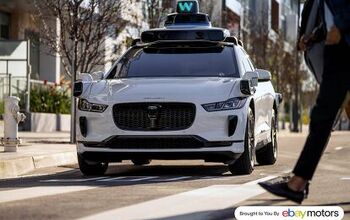Lawmakers Introduce Bill Offering USPS More Money for EVs

Despite the United States Postal Service (USPS) having recently finalized its plan to award Oshkosh Defense a $482 million contract to replace its ramshackle fleet with sparkly new Next Generation Delivery Vehicles (NGDV), Postmaster General Louis DeJoy said it could only afford to make 10 percent of the fleet electric. The USPS would allegedly need another 3 or 4 billion dollars in government assistance to make BEVs happen in meaningful numbers and some lawmakers seem happy to oblige.
A bill sponsored by House Representative Jared Huffman (a California Democrat), introduced on Monday, seeks to allocate $6 billion to increase the number of EVs used by the USPS — with the stipulation that at least 75 percent of the motor pool be zero-emission vehicles. The original plan estimated expenditures of roughly $6.3 billion over the duration of the 10-year program to modernize the United States’ postal fleet. But the service ultimately decided to go with Oshkosh’s internal combustion model, rather than the electric prototypes offered by other manufacturers.
According to Reuters, the proposal is backed by over a dozen key Democrats, including Representative Peter DeFazio, who chairs the Transportation and Infrastructure Committee, and Representative Carolyn Maloney, who chairs the Oversight and Reform Committee that oversees the USPS.
“We welcome and are interested in any support from Congress that advances the goal of a Postal Service vehicle fleet with zero emissions, and the necessary infrastructure required to operate it,” the USPS said on Monday. “With the right level of support, the majority of the Postal Service’s fleet can be electric by the end of the decade.”
To be fair, the majority of the Postal Service’s fleet could have also been electric by the end of the decade had it chosen another manufacturer (e.g. Workhorse). But we understand that the chance to toss money at well-connected defense contractors is a once-in-a-lifetime opportunity for the federal government. Er… wait… That happens all the time.
We’re not totally unsympathetic, though. Oshkosh is arguably the company best suited to tackle this from a production standpoint and optioning more internal combustion vehicles probably does maximize their overall utility. The USPS was also spending over a billion dollars per year just keeping its old fleet running, something it says will end once the NGDV has supplanted the old beaters. But there’s something annoying and wholly predictable about the government talking up how the Postal Service would be going all-electric for months, only to see it make an antithetical decision and then state that it needs more money.
[Image: USPS]

A staunch consumer advocate tracking industry trends and regulation. Before joining TTAC, Matt spent a decade working for marketing and research firms based in NYC. Clients included several of the world’s largest automakers, global tire brands, and aftermarket part suppliers. Dissatisfied with the corporate world and resentful of having to wear suits everyday, he pivoted to writing about cars. Since then, that man has become an ardent supporter of the right-to-repair movement, been interviewed on the auto industry by national radio broadcasts, driven more rental cars than anyone ever should, participated in amateur rallying events, and received the requisite minimum training as sanctioned by the SCCA. Handy with a wrench, Matt grew up surrounded by Detroit auto workers and managed to get a pizza delivery job before he was legally eligible. He later found himself driving box trucks through Manhattan, guaranteeing future sympathy for actual truckers. He continues to conduct research pertaining to the automotive sector as an independent contractor and has since moved back to his native Michigan, closer to where the cars are born. A contrarian, Matt claims to prefer understeer — stating that front and all-wheel drive vehicles cater best to his driving style.
More by Matt Posky
Latest Car Reviews
Read moreLatest Product Reviews
Read moreRecent Comments
- Bike Rather have a union negotiating my pay rises with inflation at the moment.
- Bike Poor Redapple won't be sitting down for a while after opening that can of Whiparse
- Rover Sig 2021 Jeep Grand Cherokee Limited, like my previous JGC's cheap to keep (essentially just oil, tires) until recent episode of clunking in front suspension at 50K miles led to $3000 of parts replaced over fives visits to two Jeep dealers which finally bought a quiet front end. Most expensive repair on any vehicle I've owned in the last 56 years.
- Bob Hey Tassos, have you seen it with top down. It's a permanent roll bar so if it flips no problem. It's the only car with one permanently there. So shoots down your issue. I had a 1998 for 10 years it was perfect, but yes slow. Hardly ever see any of them anymore.
- 3-On-The-Tree 2007 Toyota Sienna bedsides new plugs, flat tire on I-10 in van Horn Tx on the way to Fort Huachuca.2021 Tundra Crewmax no issues2021 Rav 4 no issues2010 Corolla I put in a alternator in Mar1985 Toyota Land Cruiser FJ60 280,000mi I put in a new radiator back in 08 before I deployed, did a valve job, new fuel and oil pump. Leaky rear main seal, transmission, transfer case. Rebuild carb twice, had a recall on the gas tank surprisingly in 2010 at 25 years later.2014 Ford F159 Ecoboost 3.5L by 80,000mi went through both turbos, driver side leaking, passenger side completely replaced. Rear min seal leak once at 50,000 second at 80,000. And last was a timing chain cover leak.2009 C6 Corvette LS3 Base, I put in a new radiator in 2021.


































Comments
Join the conversation
The problem I see is that using EV would still drive up the cost of electricity. Should have a surcharge on homes with electric vehicles. That way the owners pay the true costs.
Nothing says Financialized States of Dystopia, like playing office on the stolen fruit of other people's labor.